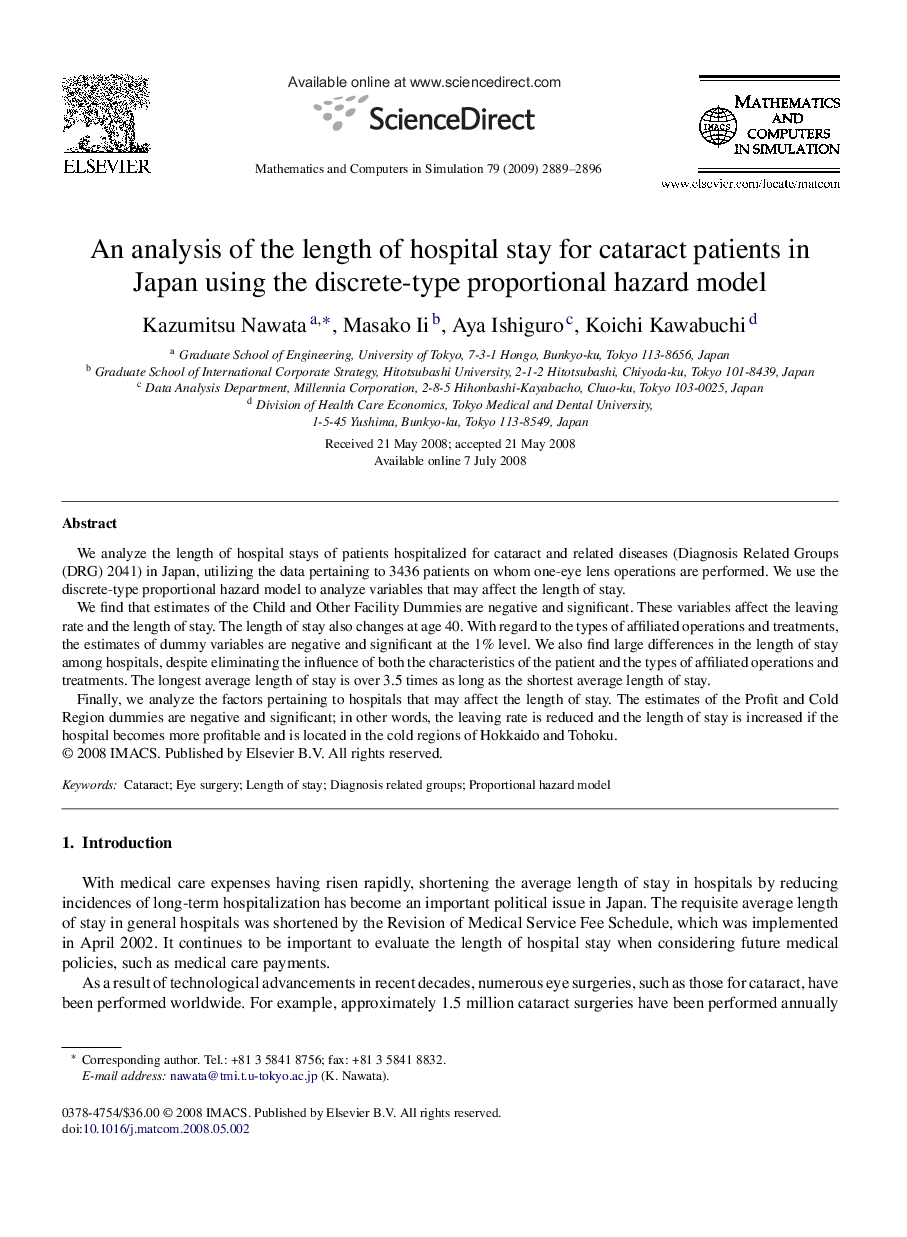| Article ID | Journal | Published Year | Pages | File Type |
|---|---|---|---|---|
| 1141122 | Mathematics and Computers in Simulation | 2009 | 8 Pages |
We analyze the length of hospital stays of patients hospitalized for cataract and related diseases (Diagnosis Related Groups (DRG) 2041) in Japan, utilizing the data pertaining to 3436 patients on whom one-eye lens operations are performed. We use the discrete-type proportional hazard model to analyze variables that may affect the length of stay.We find that estimates of the Child and Other Facility Dummies are negative and significant. These variables affect the leaving rate and the length of stay. The length of stay also changes at age 40. With regard to the types of affiliated operations and treatments, the estimates of dummy variables are negative and significant at the 1% level. We also find large differences in the length of stay among hospitals, despite eliminating the influence of both the characteristics of the patient and the types of affiliated operations and treatments. The longest average length of stay is over 3.5 times as long as the shortest average length of stay.Finally, we analyze the factors pertaining to hospitals that may affect the length of stay. The estimates of the Profit and Cold Region dummies are negative and significant; in other words, the leaving rate is reduced and the length of stay is increased if the hospital becomes more profitable and is located in the cold regions of Hokkaido and Tohoku.
